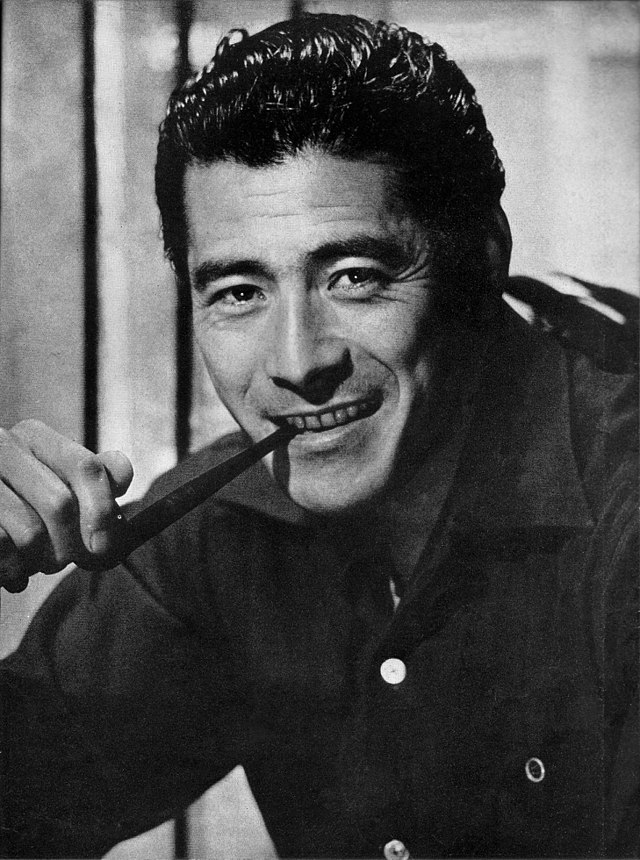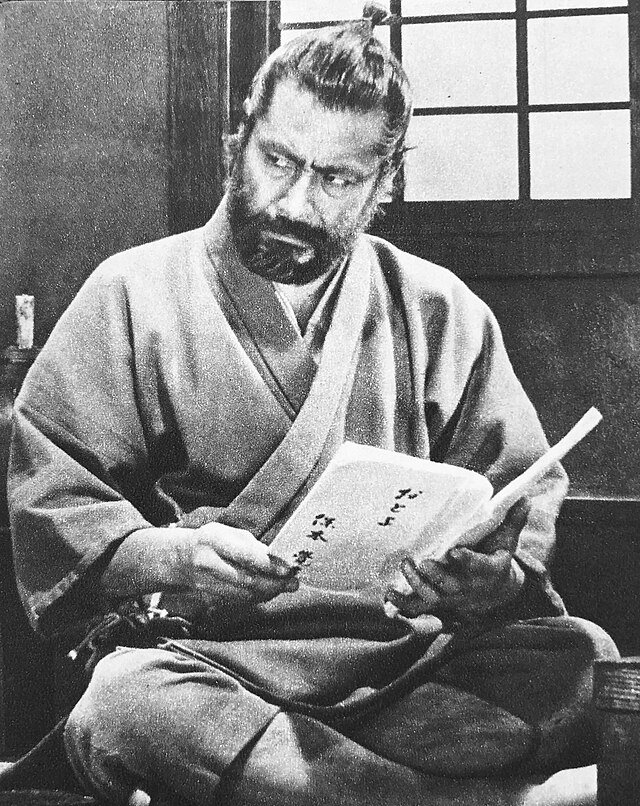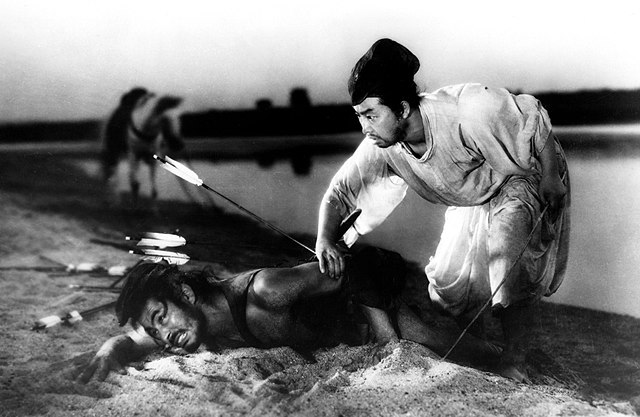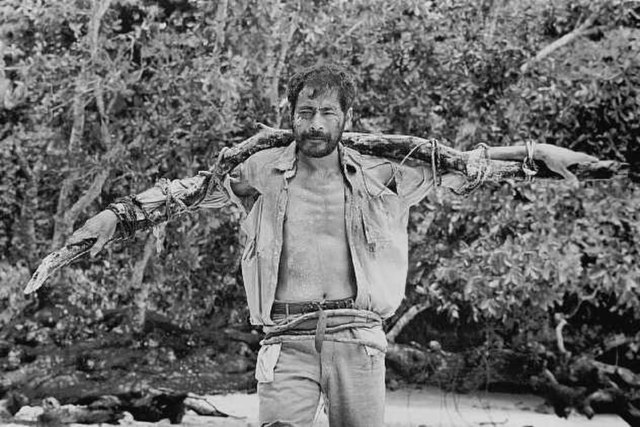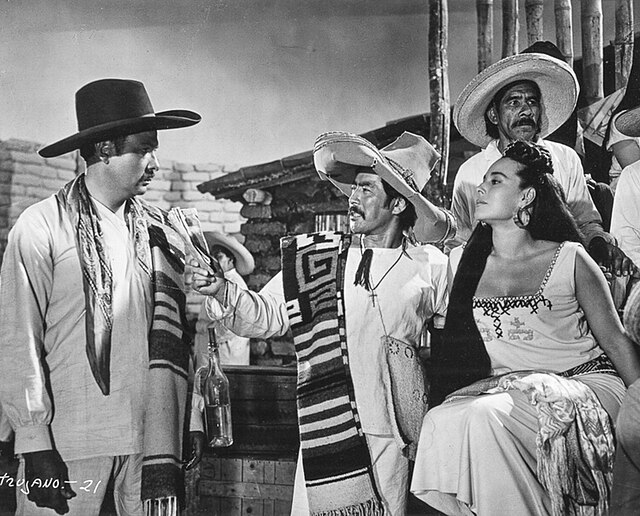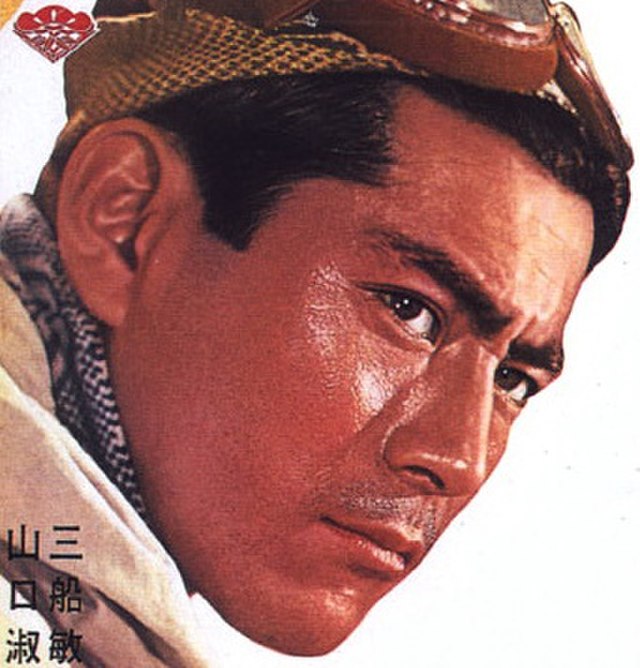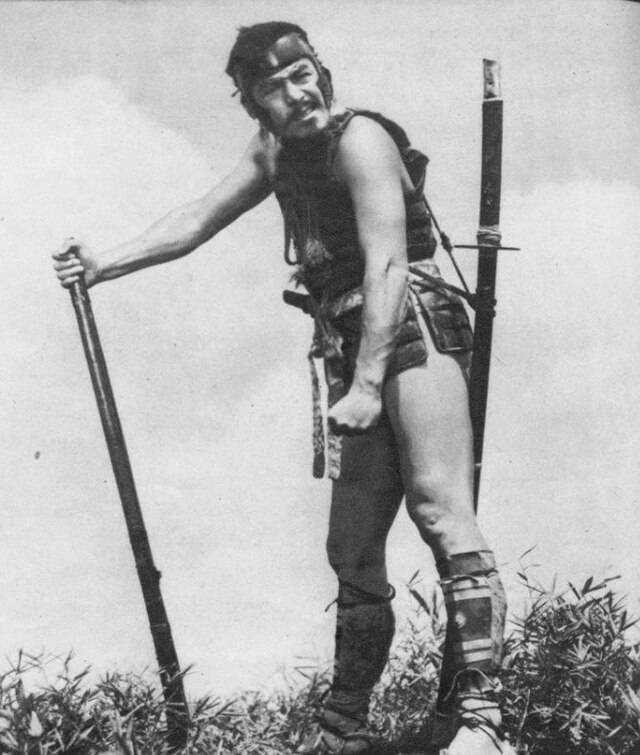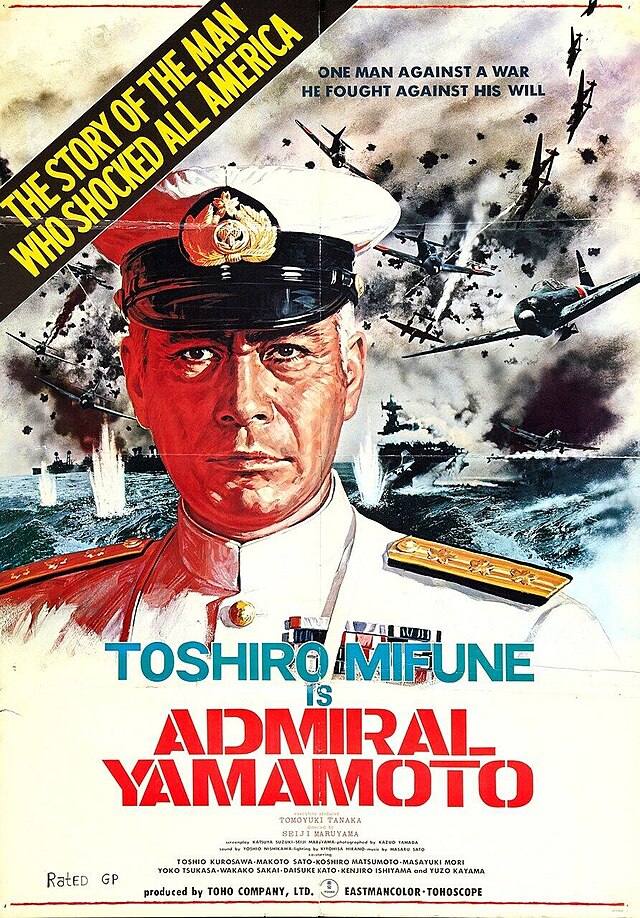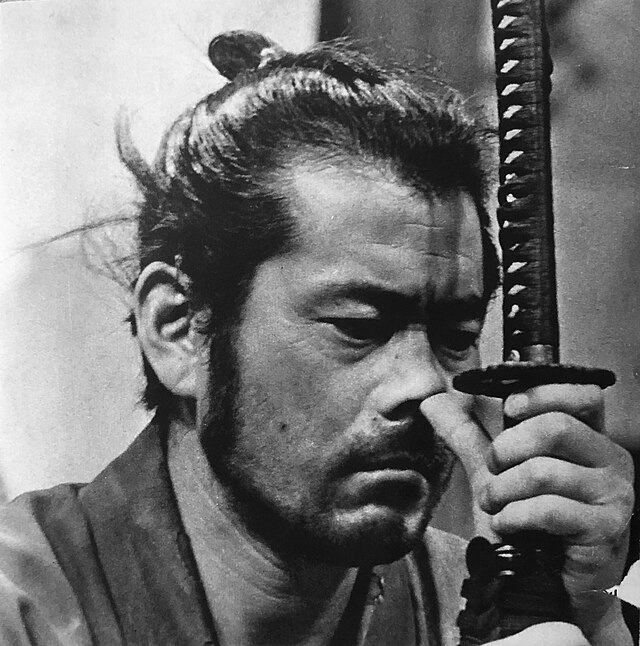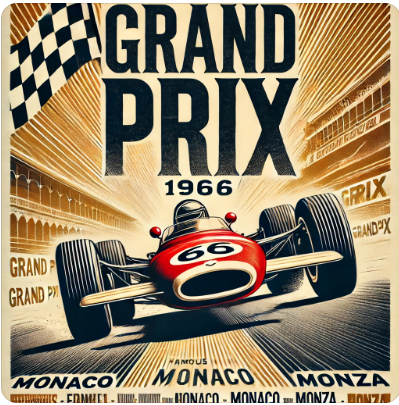Toshiro Mifune (1920 – 1997)
Biography and Movie Career
Toshiro Mifune was more than just an actor—he was a force of nature, a man whose on-screen intensity and off-screen mystique made him one of the greatest figures in film history. Best known for his collaborations with director Akira Kurosawa, Mifune played fearless samurai, charismatic rebels, and complex antiheroes, leaving an indelible mark on cinema. But his life extended far beyond the screen, shaped by war, ambition, love, and a relentless drive that made him an icon.
________________________________________
Early Life and Childhood
Toshiro Mifune was born on April 1, 1920, in Qingdao, Shandong, China, during Japan’s occupation of the region. His parents were Japanese but had moved there as part of the empire’s expansion. His father was a commercial photographer, a profession that surrounded young Toshiro with cameras and visual storytelling from an early age. Despite growing up in a foreign land, Mifune was raised in a traditionally Japanese household, adhering to strict discipline and values.
At 19, he moved to Dalian, Manchuria, where he spent much of his youth assisting in his father’s photography business. This experience gave him a keen eye for framing and composition—skills that would later contribute to his commanding on-screen presence. However, acting was far from his mind at the time. He seemed destined for a career in photography, following in his father’s footsteps.
________________________________________
World War II and the Path to Acting
When World War II broke out, Mifune was conscripted into the Imperial Japanese Army Air Service, serving as an aerial photographer. His job was to document battlefields from above, a position that put him in life-threatening situations but also deepened his visual understanding of motion and expression. He witnessed the destruction of war firsthand, an experience that would later shape the intensity of his performances.
After Japan's defeat in 1945, Mifune, like many soldiers, returned home to find his country in ruins. He moved to Tokyo, searching for work in a devastated economy. With no connections and no clear path, he stumbled into the world of cinema in the most unexpected way.
________________________________________
Breakthrough and the Kurosawa Era
In 1947, Mifune, then working as an assistant in a photography lab, learned of an open call for new actors at Toho Studios. His application, submitted without his knowledge by a friend, landed him an audition. At the time, he had no formal training and stood out from the polished, theatrical performers typically cast in Japanese films. His audition was legendary—he exploded with raw, unfiltered energy, moving chaotically, growling, and throwing himself into the scene. The judges were divided—some were horrified, while others, including Akira Kurosawa, saw a rare and extraordinary talent.
Kurosawa cast him in Drunken Angel (1948), and their collaboration became the foundation of both their careers. Over the next 16 films, Mifune would become the director’s go-to leading man, shaping some of the greatest films of all time, including:
• Rashomon (1950) – The breakthrough that put Japanese cinema on the global stage.
• Seven Samurai (1954) – His defining role as the wild, unpredictable warrior Kikuchiyo.
• Throne of Blood (1957) – A stunning adaptation of Macbeth, with Mifune in a tragic, power-hungry role.
• The Hidden Fortress (1958) – A film that inspired Star Wars, where Mifune played a fierce general.
• Yojimbo (1961) and Sanjuro (1962) – The blueprint for the modern "lone warrior" archetype, later inspiring Clint Eastwood’s The Man with No Name.
• High and Low (1963) – A gripping crime drama proving his range beyond samurai roles.
• Red Beard (1965) – The film that ended his collaboration with Kurosawa after a falling-out.
Their parting was painful. Mifune had been locked into Red Beard for nearly two years, unable to take on other roles, which led to financial hardship. Meanwhile, Kurosawa expected unwavering loyalty. Their friendship dissolved, and they never worked together again.
________________________________________
Personal Life: Marriage, Family, and Passions
Mifune married Sachiko Yoshimine in 1950, a love that was initially opposed by her family due to his rough, unpredictable persona. Despite the resistance, the couple wed and had two children: Shiro Mifune and Mika Mifune.
Although he had an intense, fiery presence on screen, those who knew him described him as kind, thoughtful, and incredibly disciplined in real life. He had a deep love for cars, often seen racing around in Western imports like Mercedes-Benz and Jaguar. He was also passionate about dogs, particularly large breeds like Great Danes, which he raised at his home.
Mifune opened his own acting school, the Mifune Geijutsu Gakuin, to pass on his knowledge to younger generations. Some of Japan’s future stars trained under him, but the school eventually closed due to financial difficulties.
________________________________________
Hollywood and International Fame
By the late 1960s, Mifune had become a global star. He appeared in Hollywood productions, including:
• Hell in the Pacific (1968), opposite Lee Marvin, exploring the tensions between an American and a Japanese soldier stranded together.
• Shogun (1980), a TV miniseries that introduced him to Western audiences unfamiliar with Kurosawa’s films.
He was also offered the role of Darth Vader in Star Wars (1977) and later considered for Obi-Wan Kenobi, but he declined, fearing it would cheapen the image of the samurai.
________________________________________
Final Years and Death
As he aged, Mifune withdrew from the public eye. He suffered from Alzheimer’s disease, which gradually took a toll on his health. By the mid-1990s, he was no longer able to work, and he lived his final years in quiet seclusion.
On December 24, 1997, Toshiro Mifune passed away in Tokyo, Japan, at the age of 77. The official cause of death was multiple organ failure, though it was widely believed that Alzheimer’s had significantly contributed to his decline. His death marked the end of an era, and tributes poured in from across the world.
________________________________________
Legacy
Mifune's impact on cinema cannot be overstated. He redefined the samurai archetype, influencing everyone from Clint Eastwood to Toshiro Nagase. His work with Kurosawa remains among the greatest director-actor partnerships in film history.
In 2016, he was posthumously awarded a star on the Hollywood Walk of Fame, a recognition of his enormous influence on global cinema. His films remain widely studied, celebrated, and rewatched, ensuring that the legend of Toshiro Mifune endures for generations to come.
Measurements and Body Features of Toshiro Mifune
• Height: 1.74 meters (5 feet 8.5 inches)
• Weight: Approximately 77 kg (170 lbs) in his prime
• Build: Athletic and muscular, with broad shoulders and a strong, powerful frame
• Hair: Black, typically worn slightly unkempt for his samurai roles
• Eyes: Dark brown, known for their intense, piercing gaze
• Facial Features:
o A rugged, chiseled face with high cheekbones and a strong jawline
o A deep furrowed brow that added to his dramatic expressions
o A signature thick mustache and beard in many of his samurai roles
Toshiro Mifune - Compilation of Sword Fights
The Acting Style of Toshiro Mifune: A Force of Nature on Screen
Toshiro Mifune was not just an actor—he was an elemental force, an untamed storm of raw energy, instinct, and physicality that revolutionized Japanese cinema. His performances were magnetic, often a mix of controlled intensity and explosive outbursts, making him one of the most recognizable and unforgettable actors in film history. Unlike the more restrained, theatrical performances of many Japanese actors of his time, Mifune brought a level of ferocity, unpredictability, and sheer presence that set him apart.
________________________________________
Physicality and Energy: The Warrior Spirit
One of the defining characteristics of Mifune’s acting style was his unparalleled physical presence. Whether playing a wild, untamed samurai or a sophisticated crime boss, his movement was always precise, powerful, and purposeful. His background as an aerial photographer in the military gave him an understanding of framing and motion, allowing him to command the screen even in stillness.
• The Unleashed Storm – In films like Seven Samurai and Yojimbo, Mifune’s characters were full of kinetic energy, moving with a restless, unpredictable quality that made them feel larger than life. His rapid movements, sudden bursts of laughter, and exaggerated mannerisms created characters that felt both deeply human and untamed.
• Animalistic Intensity – Kurosawa famously compared Mifune’s acting to a "wild animal," a description that was especially fitting for his more primal roles, such as Kikuchiyo in Seven Samurai. His crouched stance, wild expressions, and guttural growls made his performances feel organic and spontaneous, rather than rehearsed.
• Controlled Power – While he could be wild, he also knew how to restrain his energy when needed. His performance in High and Low is a masterclass in stillness and power—his character, a wealthy businessman, exudes authority without needing exaggerated movements. Instead, he controls the space with subtle facial expressions and controlled gestures, proving his versatility.
________________________________________
Expressive Face and Intense Eyes
Mifune had a uniquely expressive face, capable of conveying a wide range of emotions with minimal dialogue. His intense, piercing gaze could shift from humor to menace in an instant, creating characters that felt layered and unpredictable.
• Ferocious Eyes – His eyes were often his most commanding feature, whether filled with rage, defiance, or quiet contemplation. In Yojimbo, a single glance from him could intimidate an entire room of gangsters, making his character feel almost mythic.
• Rugged Charm – Despite his fierce expressions, Mifune could also convey warmth and humor, often through a sly smirk or a bemused stare. This balance of toughness and playfulness made his characters more human and relatable.
• Deep Emotional Range – While many associate him with warriors and rebels, he was also a deeply emotional actor. His performance in Red Beard as a wise doctor shows a more tender side, where he conveys compassion and wisdom through gentle glances and a quiet, fatherly demeanor.
________________________________________
Voice and Delivery: Commanding Yet Natural
Mifune’s voice was as powerful as his presence. He had a deep, rough, and authoritative tone that made every line he spoke feel significant.
• Guttural and Raw – He often used gruff, almost growling tones, especially when playing warriors or outcasts. His delivery in Throne of Blood and Seven Samurai was rough and passionate, adding to his characters’ primal nature.
• Sharp and Precise – In contrast, when playing samurai strategists or high-ranking officials, his voice became more measured and deliberate. In The Bad Sleep Well, his controlled, almost clipped dialogue delivery made his character feel composed and calculating.
• Improvised Speech Patterns – Unlike many Japanese actors of his time, who followed traditional kabuki-inspired diction, Mifune’s speech felt natural and modern, adding to the realism of his performances.
________________________________________
The Samurai Persona: Shaping an Icon
Mifune didn’t just play samurai—he redefined the archetype. Before him, samurai in Japanese cinema were often portrayed as refined, noble warriors. Mifune broke that mold, bringing a rough, unpredictable, and almost anti-heroic energy to the role.
• The Disheveled Ronin – His samurai were often unkempt, scruffy, and impatient, a stark contrast to the traditional, polished image of samurai warriors in classic films.
• Morally Complex Characters – His characters weren’t simple heroes; they often had flaws, arrogance, and self-interest, making them more relatable and modern.
• A New Samurai Archetype – His performances in Yojimbo and Sanjuro laid the foundation for the "lone warrior" trope, later seen in Clint Eastwood’s Spaghetti Westerns and even in characters like The Mandalorian in modern cinema.
________________________________________
Influence and Legacy
Mifune’s acting style influenced generations of actors and filmmakers, both in Japan and Hollywood. His combination of raw intensity, unpredictable movement, and emotional depth set a new standard for performance.
• Clint Eastwood – His Man with No Name character in Sergio Leone’s Westerns was heavily inspired by Mifune’s portrayal in Yojimbo.
• George Lucas – The Hidden Fortress directly influenced Star Wars, with Mifune originally being considered for the role of Obi-Wan Kenobi.
• Tatsuya Nakadai – One of Japan’s other great actors, Nakadai took inspiration from Mifune’s power and refined it into a more restrained style.
________________________________________
Conclusion: A Legend of Pure Presence
Toshiro Mifune was not just an actor—he was a phenomenon, a man who could fill the screen with presence even without speaking. His ability to switch between wild aggression and quiet contemplation, his physical control, and his commanding voice made him one of the greatest performers of all time. His legacy continues to shape cinema, proving that acting is not just about technique, but about embodying a character with every fiber of one’s being.
Memorable Quotes of Toshiro Mifune
• On his collaboration with Akira Kurosawa: "I have never as an actor done anything that I am proud of other than with him."
• Reflecting on his acting approach: "Since I came into the industry very inexperienced, I don't have any theory of acting. I just had to play my roles my way."
• On the portrayal of East–West narratives: "Generally speaking, most East–West stories have been a series of clichés. I, for one, have no desire to retell Madame Butterfly."
• Regarding the actor-director relationship: "An actor is not a puppet with strings pulled by the director. He is a human being with seeds of all emotions, desires, and needs within himself. I attempt to find the very center of this humanity and explore and experiment."
Toshiro Mifune's best Sword Fights
Toshiro Mifune was a master of sword fighting on screen, delivering some of the most intense and iconic duels in cinematic history. His fight choreography, combined with his raw physicality and instinctive movements, made him the embodiment of the ultimate samurai warrior. Here are some of his best sword fights in movies:
________________________________________
"Seven Samurai" (1954) – Final Battle Against the Bandits
• As Kikuchiyo, Mifune delivers an unforgettable performance in the climactic rain-soaked battle, where he fights with reckless abandon, wielding his sword with unrestrained fury. Though less technical than some of his other duels, the sheer energy and desperation of the scene make it one of his most gripping fights.
________________________________________
"Samurai Trilogy" (1954-1956) – Musashi Miyamoto’s Legendary Duels
• "Samurai I: Musashi Miyamoto" (1954) – His first major duel, showcasing his evolution from a reckless warrior to a disciplined swordsman.
• "Samurai II: Duel at Ichijoji Temple" (1955) – A stunningly choreographed sequence where he fends off multiple enemies in a tense and desperate battle.
• "Samurai III: Duel at Ganryu Island" (1956) – The famous one-on-one duel against Sasaki Kojiro, where Mifune, wielding a wooden sword, executes a brilliantly timed strike in a visually poetic fight at sunrise.
________________________________________
"Throne of Blood" (1957) – Final Moments in the Castle
• While not a duel in the traditional sense, Mifune’s intense swordplay as his character succumbs to betrayal is a standout. His wild, erratic swings and sheer desperation make it a hauntingly memorable fight.
________________________________________
"Yojimbo" (1961) – Lightning-Fast Showdowns
• Mifune’s Sanjuro character is a calculating and deadly swordsman.
• The final duel, where he faces off against a pistol-wielding rival, is particularly iconic. With just one swift and precise strike, he delivers a fatal blow in what is arguably one of the coolest and most efficient sword fights in film history.
________________________________________
"Sanjuro" (1962) – The One-Strike Duel Against Muroto
• This short but masterful duel is often considered one of the greatest sword fights in cinema due to its realistic tension and sudden explosiveness.
• Mifune stands motionless, staring down his opponent, before one decisive and perfectly timed draw ends the fight in a single slash, resulting in a dramatic spray of blood.
________________________________________
"The Sword of Doom" (1966) – Mifune vs. Tatsuya Nakadai
• Though not the main star, Mifune’s role as a master swordsman is unforgettable.
• In one of the best kenjutsu sequences ever filmed, Mifune, playing a samurai instructor, demonstrates flawless sword technique and defeats multiple opponents with masterful precision. His encounter with Nakadai is a highlight.
________________________________________
"Samurai Rebellion" (1967) – The Final Duel
• A brutal and realistic fight in which Mifune, playing an aging but still skilled warrior, battles to protect his family’s honor.
• The fight is raw and desperate, with Mifune using both strength and cunning, making it one of his most emotionally charged duels.
________________________________________
"Shogun" (1980, TV Miniseries) – Multiple Fight Sequences
• As Lord Toranaga, Mifune has several sword-fighting moments that emphasize strategy and leadership rather than personal combat.
• While not as intense as his samurai-era films, these fights still showcase his mastery of movement and presence.
________________________________________
Final Thoughts on his Sword Fights
Mifune’s sword fights weren’t just about choreography; they were deeply expressive, blending ferocity, precision, and emotional weight. Whether in the perfectly timed strike of Sanjuro, the desperate chaos of Seven Samurai, or the masterful patience in Samurai Rebellion, he set the gold standard for cinematic swordplay. His ability to convey raw intensity, discipline, and unpredictability made him the definitive samurai on screen.
Awards and Recognition
Toshiro Mifune's illustrious career garnered numerous awards and honors, reflecting his significant contributions to cinema both in Japan and internationally. Below is an overview of his most notable accolades:
International Awards:
• Venice Film Festival:
o 1961: Awarded the Volpi Cup for Best Actor for his role in "Yojimbo."
o 1965: Received the Volpi Cup for Best Actor for "Red Beard."
• British Academy Film Awards (BAFTA):
o 1956: Nominated for Best Foreign Actor for "Seven Samurai."
• Primetime Emmy Awards:
o 1981: Nominated for Outstanding Lead Actor in a Limited Series or a Special for portraying Lord Yoshi Toranaga in "Shōgun."
• Hollywood Walk of Fame:
o 2016: Posthumously honored with a star on the Hollywood Walk of Fame for his contributions to the motion picture industry.
Japanese Awards:
• Blue Ribbon Awards:
o 1951: Won Best Actor for "Bakuro Ichidai" and "Onna Gokoro Dareka Shiru."
o 1961: Awarded Best Actor for "Yojimbo" and "Ánimas Trujano."
o 1965: Received Best Actor for "Red Beard."
• Kinema Junpo Awards:
o 1969: Honored as Best Actor for his performances in "Gion Matsuri," "The Sands of Kurobe," and "Admiral Yamamoto."
• Awards of the Japanese Academy:
o 1988: Nominated for Best Supporting Actor for "Princess from the Moon."
o 1995: Received the Lifetime Achievement Award.
o 1998: Posthumously honored with a Special Award for his career.
Government Honors:
• Medal with Purple Ribbon:
o 1986: Awarded by the Japanese government for his contributions to the arts.
• Order of the Sacred Treasure:
o 1993: Bestowed with the Order of the Sacred Treasure for his distinguished achievements.
Toshiro Mifune Notable Movies Overview
1948
• Drunken Angel – Mifune plays a hot-tempered gangster suffering from tuberculosis who forms an unlikely bond with an alcoholic doctor in post-war Japan.
1949
• Stray Dog – A rookie detective (Mifune) loses his pistol to a pickpocket and embarks on a tense search through Tokyo's criminal underworld to retrieve it.
1950
• Rashomon – A bandit (Mifune) is accused of assault and murder, but conflicting testimonies challenge the nature of truth and perception.
1954
• Seven Samurai – A group of samurai, including the wild and unpredictable Kikuchiyo (Mifune), are hired to defend a poor village from ruthless bandits.
• Samurai I: Musashi Miyamoto – The first of a trilogy depicting the rise of the legendary swordsman Musashi Miyamoto.
1955
• Samurai II: Duel at Ichijoji Temple – Musashi continues his journey, refining his skills and facing overwhelming odds in battle.
1956
• Samurai III: Duel at Ganryu Island – Musashi faces his greatest rival, Sasaki Kojiro, in a legendary duel that defines his legacy.
1957
• Throne of Blood – A samurai warlord (Mifune) succumbs to paranoia and prophecy in this Japanese retelling of Macbeth.
1958
• The Hidden Fortress – A rogue general (Mifune) protects a disguised princess through enemy territory, a film that later inspired Star Wars.
1961
• Yojimbo – A wandering ronin plays two rival factions against each other, inspiring Westerns like A Fistful of Dollars.
1962
• Sanjuro – Mifune’s gruff samurai aids a group of inexperienced warriors, culminating in one of cinema’s greatest one-strike duels.
1963
• High and Low – A gripping crime thriller where Mifune plays a businessman caught in a moral dilemma after a kidnapping.
1965
• Red Beard – A compassionate doctor (Mifune) mentors a young intern in a rural clinic, marking his final collaboration with Akira Kurosawa.
1966
• The Sword of Doom – Mifune plays a master swordsman who confronts a nihilistic, ruthless samurai in a stunningly choreographed duel.
• Grand Prix – A Hollywood racing film in which Mifune plays a wealthy Japanese auto team owner navigating the high-stakes world of Formula One.
1967
• Samurai Rebellion – A senior samurai (Mifune) defies his feudal lord to protect his family's honor, leading to an emotionally charged, tragic showdown.
1968
• Hell in the Pacific – Mifune and Lee Marvin star as a Japanese and an American soldier stranded on a deserted island during World War II.
1970
• Red Sun – Mifune plays a samurai on a mission in the Wild West, teaming up with a gunslinger played by Charles Bronson.
1980
• Shogun (TV Miniseries) – Mifune plays Lord Toranaga, a powerful warlord in feudal Japan navigating political and military intrigue.
1989
• Death of a Tea Master – A contemplative film about the life of tea master Sen no Rikyu, played by Mifune.
1995
• Deep River – One of Mifune’s last films, exploring themes of spirituality and personal redemption.

